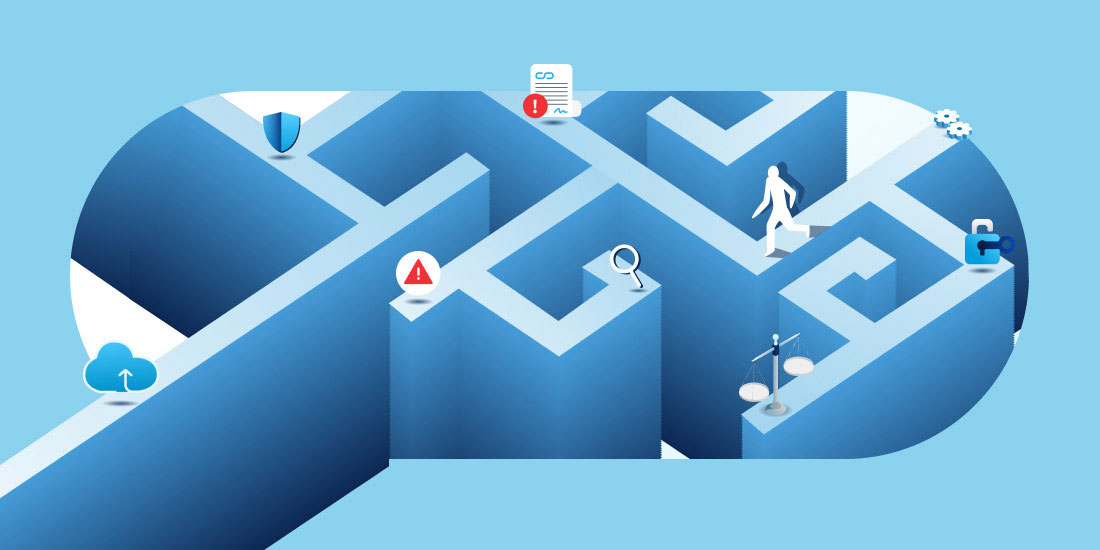Estimated Reading Time: 4 Minutes
Every MSP business leader eventually reaches the point when you need a sales team. Principal-led sales will get you only so far. At some point, a growing business needs a sales team. Building up the sales function requires not only the right people in the right roles, but it also requires smart compensation plans and KPIs.
In this blog, we will explore the five most important metrics when ‘goaling’ and compensating your growing sales team.
1. QBR Cadence
Most MSPs first build up their sales functions by staffing account managers to look after existing clients. When an MSP has thirty or forty clients, they are ready for their first account manager. The account manager should own the business relationship with all existing clients, be the service escalation point, and be responsible for revenue growth from the base.
Revenue from existing clients comes in the form of special projects, product sales, and technology modernization and alignment projects. Driving technology alignment requires focused management of the client life cycle and the related hardware, software, and technologies in use by the client. Driving standardization amongst clients (like dedicated Tech Stacks) yields all sorts of benefits for the MSP, including reduced staff training costs, increased technician productivity, and more stable operating environments for the clients.
To drive technology alignment and standardization, an MSP should have a well-thought-out quarterly business review (QBR) process. Admittedly, many clients may not need a meeting every quarter. Strategic accounts should get quarterly meetings and other accounts should get strategic planning meetings biannually. For this reason, many MSPs eschew the term QBR for terms like technology business reviews (TBRs) or strategic business reviews (SBRs). Let’s use QBR here for simplicity. Whatever term you choose, you should have clear goals on the frequency of QBRs for each client. You should segment the entire clientele and attach a number to each account. The account manager should be responsible for ensuring that QBRs happen at the cadence desired. This is no mean feat. Keeping clients to a schedule requires detailed planning, expert coordination, and follow-through. However, this is really the first and most important goal for your account managers.
2. Organic Revenue Growth
Once you have your clients meeting on a regular QBR cadence, it is vastly easier to help the client manage their IT budget. In a well-managed relationship, technology should get the first budget dollar, not the last. By doing so, you can cut down on client procrastination or foot-dragging when it comes to critical IT projects, such as server upgrades, client migrations, or network refreshes.
A well-run MSP should not only have predictable recurring revenue, but a healthy backlog of projects where the client has signed off on projects that are ready to be worked on. Account managers should utilize robust sales quoting tools such as ConnectWise Sell or Quotewerks, which integrate with project management and PSA software tools.
When account managers reach a certain level of maturity in their roles, they should primarily be incentivized on revenue growth. Growth can arise from product sales, special projects, and so on. In many MSPs without an account manager, the client-installed base will often grow 5-10% without any special effort, since most clients will organically add headcount, while automatic annual price increases will further add to the topline. Account managers make a real difference when they can drive organic growth from existing clients in the 18-20% range. At this rate of growth, the MSP is then achieving best-in-class revenue growth.
3. First Time Appointments (FTAs)
After mastering account management and existing client management, growth oriented MSPs should start investing in business development. Even if the business principals are the best closers for new clients, there is a huge advantage in turbocharging their efforts with a business development representative (BDR).
BDRs are the sharp end of the spear. Their job should be to prospect into targeted accounts or verticals. Most growth-focused companies will have a few hundred local accounts that fit their ideal profile. Alternatively, the MSP may have a few target verticals for new acquisition. While marketing should provide air cover into these targeted accounts, BDRs should be the ones fighting the ground war with tele-prospecting and outreach to these accounts. The goal should be to find accounts with pain points or needs, along with a willingness to meet with an expert for a free consultation. The key is to have realistic goals for BDR reps in terms of the number FTAs they should achieve per month. If the marketing team is already driving lots of inbound leads, the FTA goal should be higher. If the BDRs are mostly doing cold outreach to new accounts, the number should be lower. For most MSP BDR reps, a reasonable quota for FTAs should be somewhere between 3-10 FTAs per month.
4. New Monthly Recurring Revenue (MRR) Bookings
5. Gross Margins
Lastly, your sales team should have clear goals around gross margins. Managing margins is never easy, but if you follow the other principles laid out in this blog, managing margins is a lot easier. For existing accounts, the way to keep margins in line is to make IT procurement a strategic benefit of your relationship. If you have clients who nickel and dime you and second guess every hardware quote, you likely have a tactical relationship. Successful MSPs weave IT procurement into project management and special projects, saving the client time, money, and extra headaches. With massive supply chain disruptions, IT procurement is more complex than ever. MSPs can add huge value by shielding the client from the hassles and complexity of procurement.
Margins for products should fall in the range of 15-20%, while labor or service gross margins should be a minimum of 50%. When projects are expertly quoted and managed services deals are priced after a thorough technology assessment, it is a lot easier to price at a premium and defend this level of pricing with facts for your clients.
Getting sales right in 2022 requires the right KPIs and goals for your sales team, whether your team is made up of account managers, business development reps, account executives or business principals. Dropsuite works with partners to not only help them develop their backup and business continuity service offerings but to mature their business operations as well.






